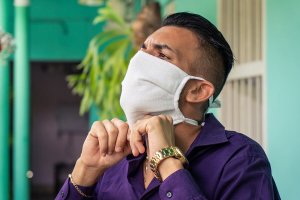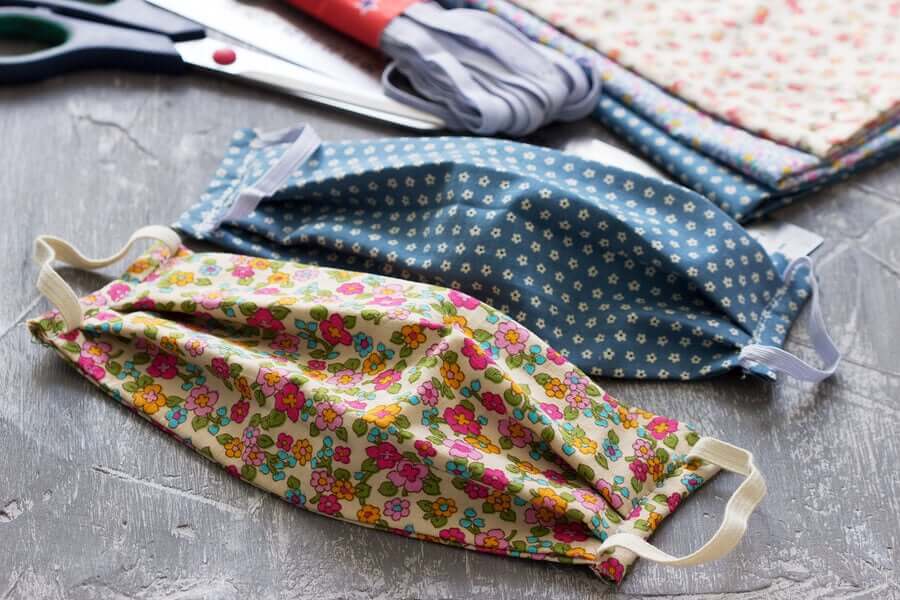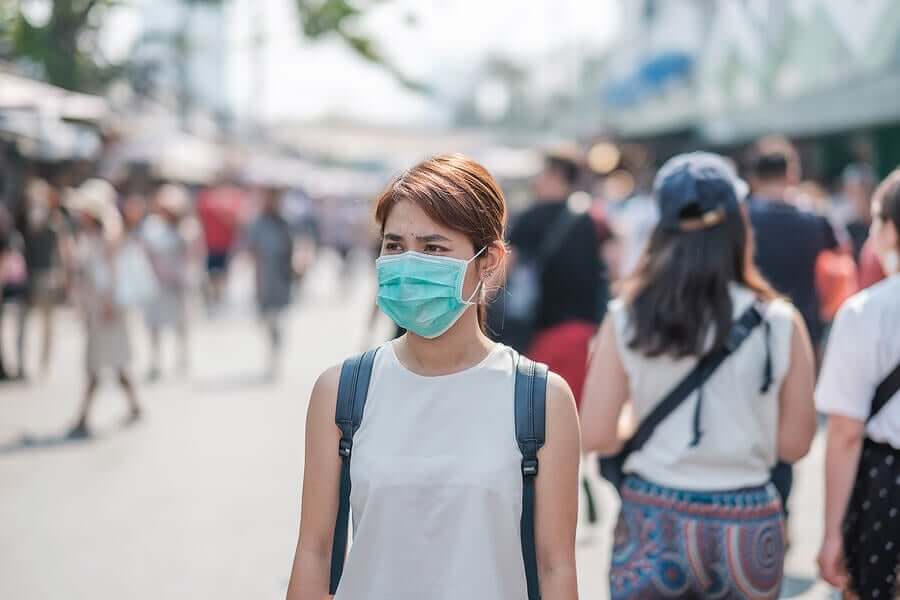Common Mistakes When Using Cloth Masks

The Centers for Disease Control and Prevention and the World Health Organization have been warning that some people are making mistakes when using cloth masks. While these elements appear to help slow the spread of COVID-19, misuse reduces their usefulness.
In recent days, everyone has been advised to use these masks, especially when making essential trips to public places such as a grocery store or a pharmacy. Although they aren’t effective enough to prevent infection, experts believe that they help prevent the spread of the virus in cases where an asymptomatic person doesn’t know they have the virus.
However, the organizations we mentioned above tell us that it’s essential that we know how to use them correctly. Above all, we should know how to prevent mistakes that may reduce their effectiveness.
What are these mistakes?
Keep reading to find out what they are and how to prevent them.
Errors when using cloth masks
We can find fabric masks made with different materials such as anti-fluid fabric or cotton. However, this latter is the most recommended one, since it isn’t usually aggressive for the skin and attaches well to our face. In any case, regardless of the material, the most important thing is to avoid making mistakes when using fabric masks.
1. Assuming they are suitable for everyone
A common misconception about using cloth masks is that they’re suitable for everyone, without exceptions. Well, in one of their recent publications, the Centers for Disease Control and Prevention warns that there are cases where we should avoid using these masks. These include:
- Children under the age of two,
- People with respiratory problems,
- Patients who are unconscious,
- People who are disabled or for any reason can’t remove their mask without assistance.

2. Believing they provide medical-grade protection
Although the evidence is inconclusive and experts are still debating the issue, they do suggest that wearing a cloth mask may help reduce the spread of COVID-19. This is especially true considering that there are people who have no symptoms and continue to live their normal lives.
Despite this, the CDC and other health authorities emphasize that their use is an insufficient measure to prevent infection. Furthermore, it isn’t correct to think that they provide the same protection as a surgical mask or N95 respirator, which are reserved for health personnel.
Read also: What’s the Origin of Coronavirus and Why Haven’t We Been Able to Eradicate It?
3. Stopping hand washing and reducing social distancing
Because these masks are insufficient to prevent infection, we still need to maintain measures such as constant hand washing and social distancing. It’s a mistake to think that the mere fact of using these masks will protect us without us having to take any other precautions.
Keeping hands clean is still one of the main preventive measures. In addition, you should always remain at least 2 meters (6 feet) distance from other people when spending time in places such as supermarkets, pharmacies, and public transport.
4. Only covering your mouth
This is undoubtedly one of the most common errors when using cloth masks. We see how people, perhaps for comfort, cover only their mouths and expose their noses. That’s not how they’re supposed to work!
It’s essential to protect all your airways, as much as possible. Therefore, cloth masks or medical masks should cover both the nose and mouth at all times. Remember that these are the main routes of transmission of COVID-19.

5. Not washing cloth masks after use
While it isn’t necessary to dispose of cloth masks, it is essential to wash them thoroughly after each use. Even if they look clean to the naked eye, it’s a mistake to use them several times in a row without washing them.
The CDC points out that it’s enough to wash them with the rest of your laundry for them to be ready for use again. Of course, they can also be washed by hand with soap and water. The best thing about these masks is that washing them doesn’t make them lose their shape, and they last a long time.
Discover: The Coronavirus and Asthma: Recommendations
6. Not washing your hands before and after using the masks
As we’ve already said, it’s important to maintain constant hand washing. However, we’d like to add the hand hygiene should be repeated before and after touching your mask. Remember that this element isn’t exempt from pathogens, just as with hands, and so hygiene is essential.
When not in use, you should store the masks in a clean bag, preferably a resealable one. Alternatively, you can use a clean non-airtight container.
Mistakes when using cloth masks: Final reminders
Making mistakes when using fabric masks reduces their effectiveness as a preventative measure against COVID-19. So, if you’re making these mistakes, then you should correct them as soon as possible. In addition to this, you should never stop doing prevention habits, such as washing your hands well, maintaining social distancing, and respecting home confinement.
We hope this article has been useful to you. Stay tuned for more information on the virus and how to stay healthy!
All cited sources were thoroughly reviewed by our team to ensure their quality, reliability, currency, and validity. The bibliography of this article was considered reliable and of academic or scientific accuracy.
- Centers for Disease Control and Prevention. (2020). Use of Cloth Face Coverings to Help Slow the Spread of COVID-19 | CDC. Available in https://www.cdc.gov/coronavirus/2019-ncov/prevent-getting-sick/diy-cloth-face-coverings.html
- BBC News Mundo. (6 de abril de 2020). Mascarillas de tela: cómo se hacen y cuáles son los errores al usarlas. BBC. Recuperado de https://www.bbc.com/mundo/noticias-52192632
This text is provided for informational purposes only and does not replace consultation with a professional. If in doubt, consult your specialist.








